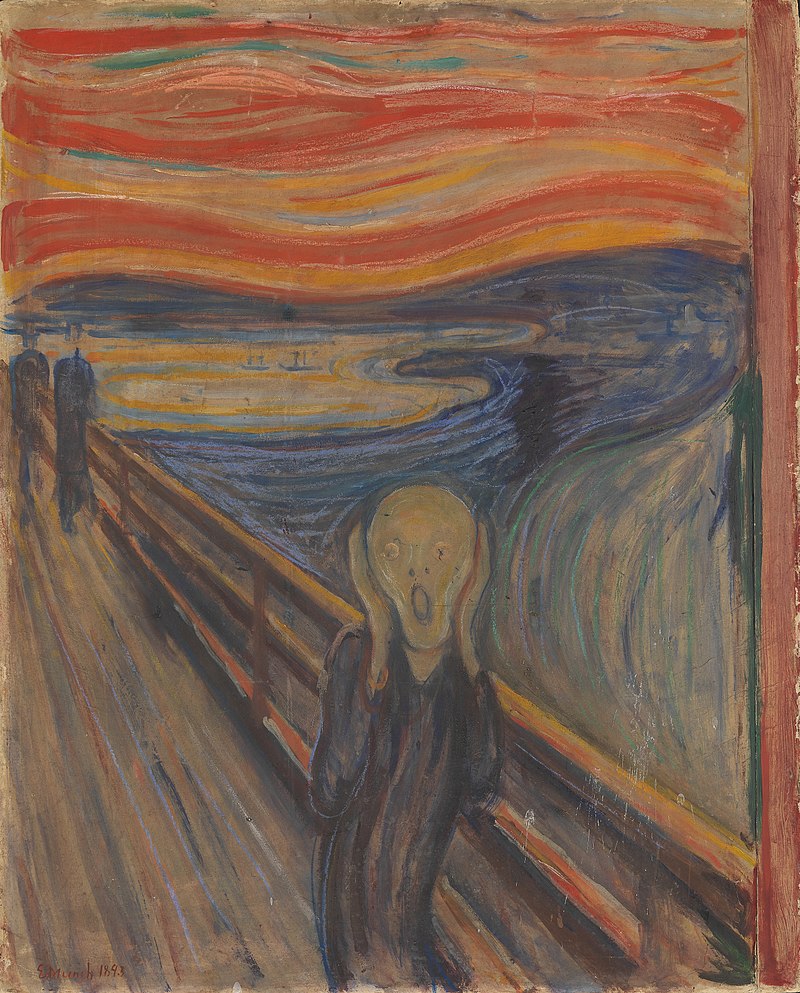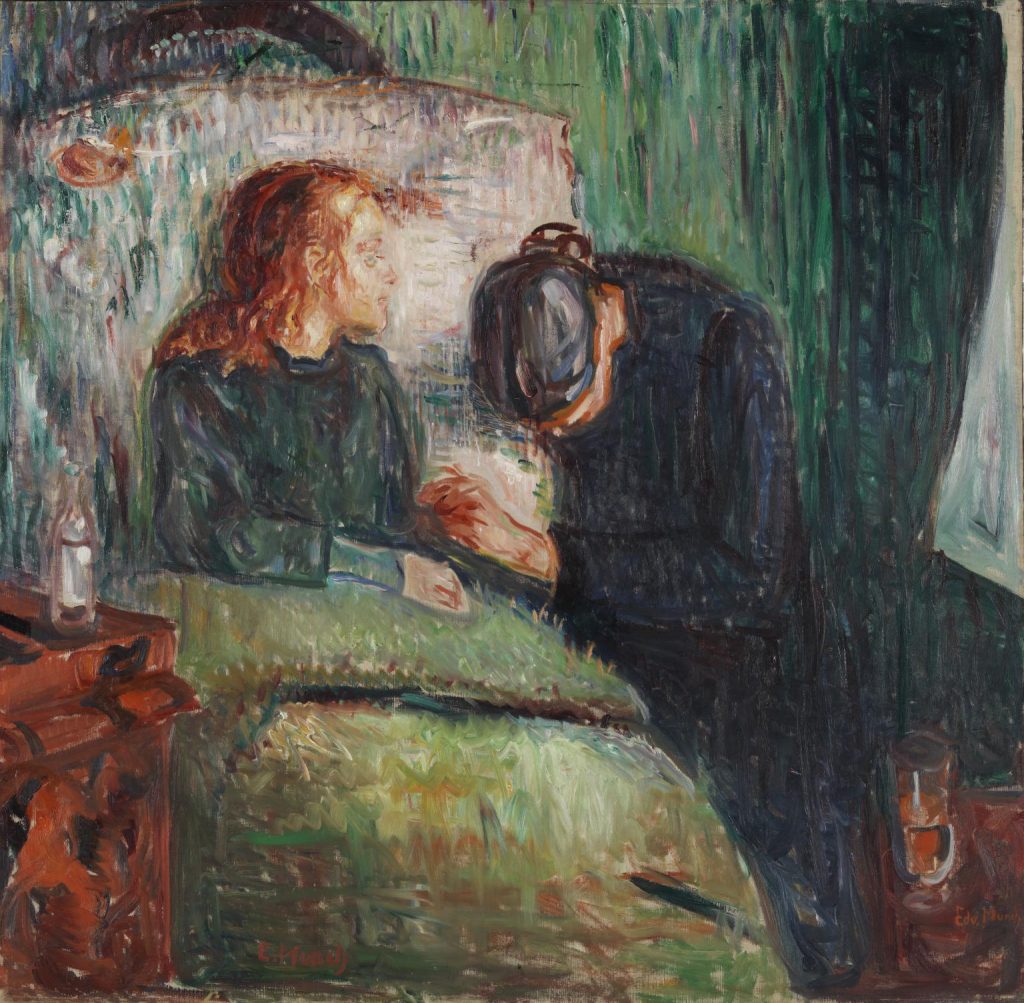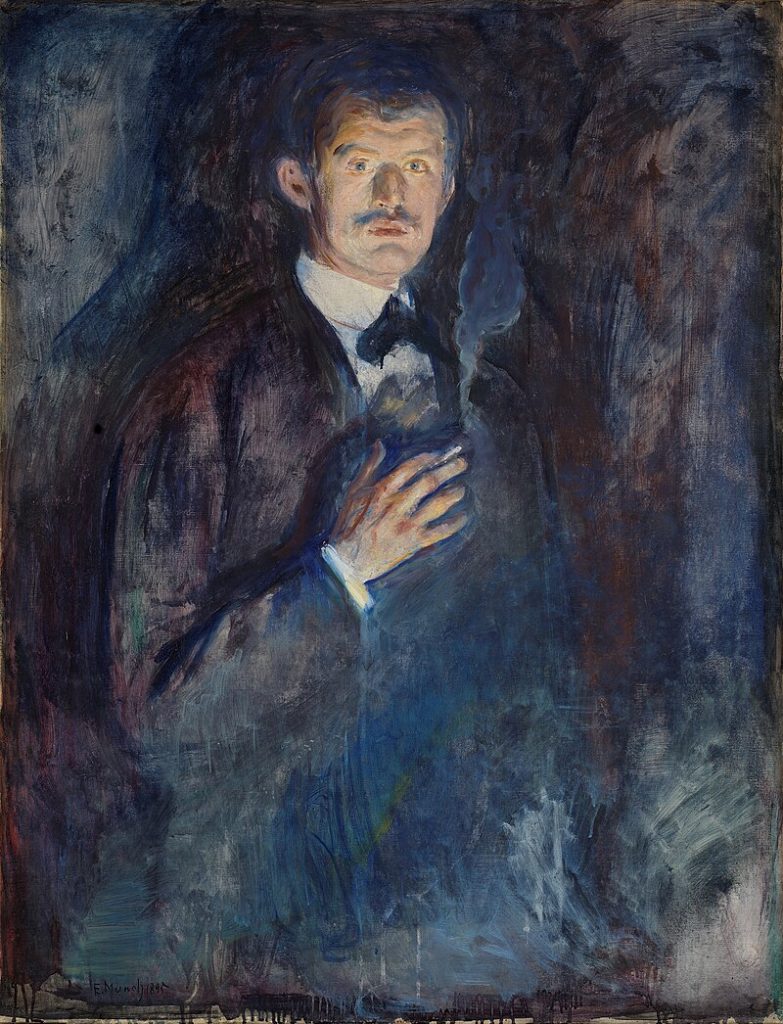Edvard Munch (1863–1944) was a Norwegian painter and printmaker, best known for his iconic work “The Scream.” His art is often associated with the Symbolist and Expressionist movements, and he played a significant role in the development of modern art.

The Scream, Oil pastel, crayon and tempera, 1893, National Gallery, Oslo, Norway
The Scream (1893): Perhaps Munch’s most famous work, “The Scream” is a powerful and iconic representation of existential anxiety and despair. The distorted face and vibrant, swirling colors evoke a sense of emotional turmoil, making it a symbol of the human condition.

The Madonna, 1893-95, three versions exist. National Gallery, Oslo and Kunsthalle Hamburg
The Madonna (1894-1895): This series of paintings explores themes of love, death, and spirituality. Munch’s Madonna is not a traditional representation; instead, it reflects his personal and psychological interpretation, often depicting a woman in a state of melancholy.

The Dance of Life 1925, Oil on canvas, National Gallery Oslo
The Dance of Life (1899-1900): This painting is part of a series that depicts different stages of life. “The Dance of Life” portrays a scene of a couple dancing in a stylized landscape. It captures the fleeting nature of joy and the inevitability of change.

The Sick Child (1885-1886): One of Munch’s earlier works, this painting reflects the influence of Impressionism. It depicts the illness and eventual death of his sister, reflecting the deep emotional impact that personal experiences had on his art.

Self Portrait with cigarette, 1895, Oil on canvas, National Gallery Oslo
Self-Portrait with Cigarette (1895): Munch created several self-portraits throughout his career. In this particular work, he presents himself with a cigarette, exuding a sense of introspection and a glimpse into his own complex personality.
Munch’s art often delves into themes of love, death, anxiety, and the human psyche. His innovative use of color, symbolism, and expressive brushstrokes contributed to the development of Expressionism and had a profound influence on the evolution of modern art.
